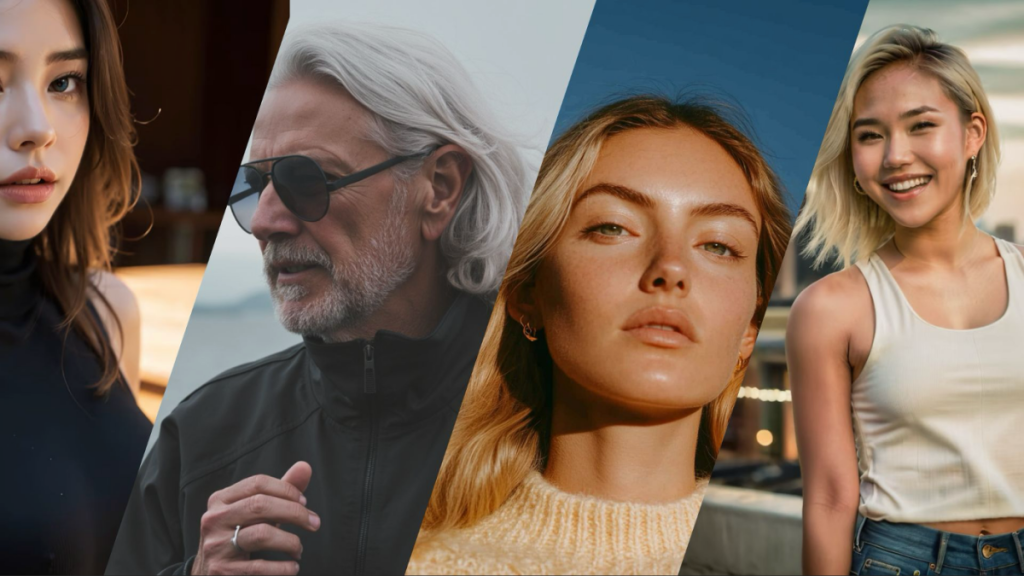In recent years, artificial intelligence (AI) has advanced to the point where it can generate photorealistic images from simple text descriptions. These images are so lifelike that they can easily deceive even the most discerning eye. With the rise of these capabilities, a multitude of AI tools have emerged, each offering its unique take on image generation.
But with so many options available, how do you determine which tools stand out in the crowded field? Here are five AI platforms that are best in generating photoreallistic portraits.
- Nectar AI
- Midjourney V6.1
- OpenAI’s Dall-E 3
- Freepik
- Leonardo AI
Let’s explore each of these tools in detail.
1. Nectar AI
Nectar AI is a generative AI platform that allows you to create realistic photos your own virtual companion and role-play with them whenever and however you want.
The AI tool leverages state-of-the-art AI models to generate stunningly realistic images. Using advanced neural networks, Nectar AI can create images that capture the minute details of human features, textures, and expressions. This technology ensures that every virtual companion looks and feels lifelike, enhancing the overall user experience.
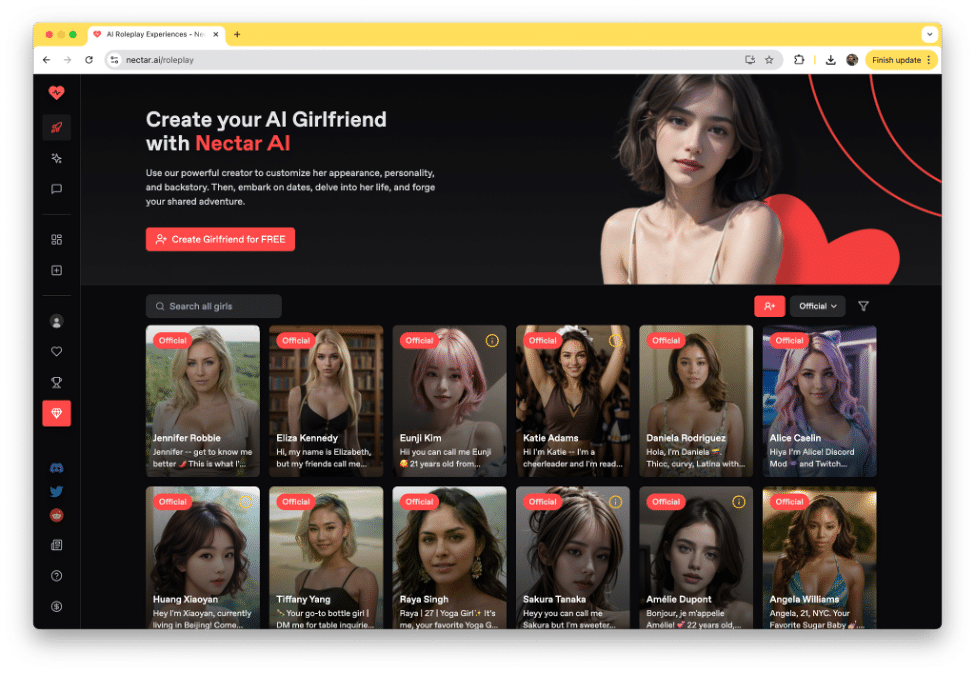
Unlike many AI companion generators that limit character customization, Nectar AI offers an impressive selection of seven distinct image models. This diverse range empowers users to create AI companions that perfectly align with their unique aesthetic preferences.
Users can create virtual companions to match their specific preferences, from physical traits like hair color and eye shape to personality traits and conversation styles. This level of personalization ensures that each virtual companion is unique, offering a special experience for every user.
Pros:
● Customization: Nectar AI offers over 300 customization options, allowing users to tailor their virtual companions to their liking. This includes adjustments in appearance, outfits, and even personality traits.
● High-Resolution Images: The platform generates high-definition images, ensuring that every detail is captured, enhancing the realism of the virtual companions.
● Interactive Roleplay: Users can engage in immersive roleplay scenarios with their AI companions, providing a unique avenue for escapism and entertainment.
● User Privacy: Nectar AI emphasizes user privacy by not retaining personal data or images, which is a significant advantage for those concerned about data security.
Here’s an example image generation with Nectar AI:
Prompt: A photorealistic image of an asian girl, tshirt, skirt, depth of field, portrait
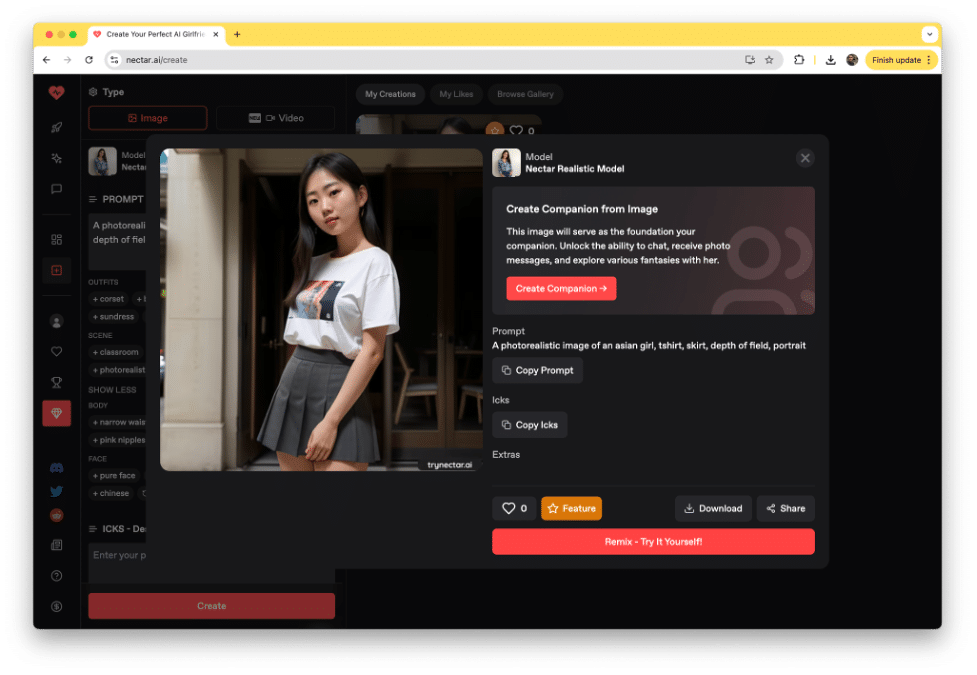
The details in the hair and skin texture are unmatched. It’s easy to assume that this is a real photo of a person at first glance. The limbs and fingers, which most AI image generators have struggled to perfect for years, are also on point.
2. Midjourney V6.1
Midjourney is a platform focused on AI-image generation. Just last week, the latest model V6.1 was released with enhanced quality and personalization. Midjourney has been a community favorite for years because of how realistic the images are.
Midjourney also offers a lot of customization options, including styling, aspect ratio, inpainting/outpainting, and more.
Pros:
● Enhanced Image Quality: Midjourney V6.1 is mainly popular in realism, producing images that are nearly indistinguishable from photographs. Users have noted a marked improvement in the quality and detail of generated images, reduced pixel artifacts and better textures, including skin and 8-bit retro styles.
● Coherent Images: Improvements in rendering arms, legs, hands, bodies, plants, and animals.
● Improved Text Accuracy: Better accuracy when drawing words via “quotations” in prompts.
● Community Engagement: Midjourney has cultivated a vibrant community of artists and users, fostering collaboration and inspiration among creators.
Here’s an example of images generated with Midjourney:
Prompt: A photo of lilly collins, alex prager, kodak gold 400
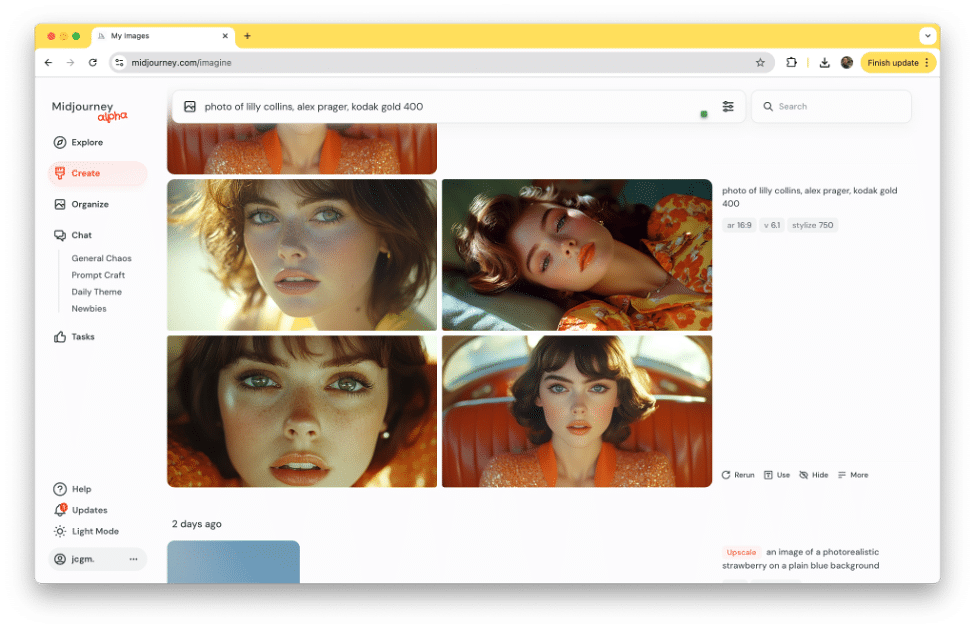
Here’s another:
Prompt: old man with glasses portrait, photo, 50mm, f1.4, natural light, Pathéchrome
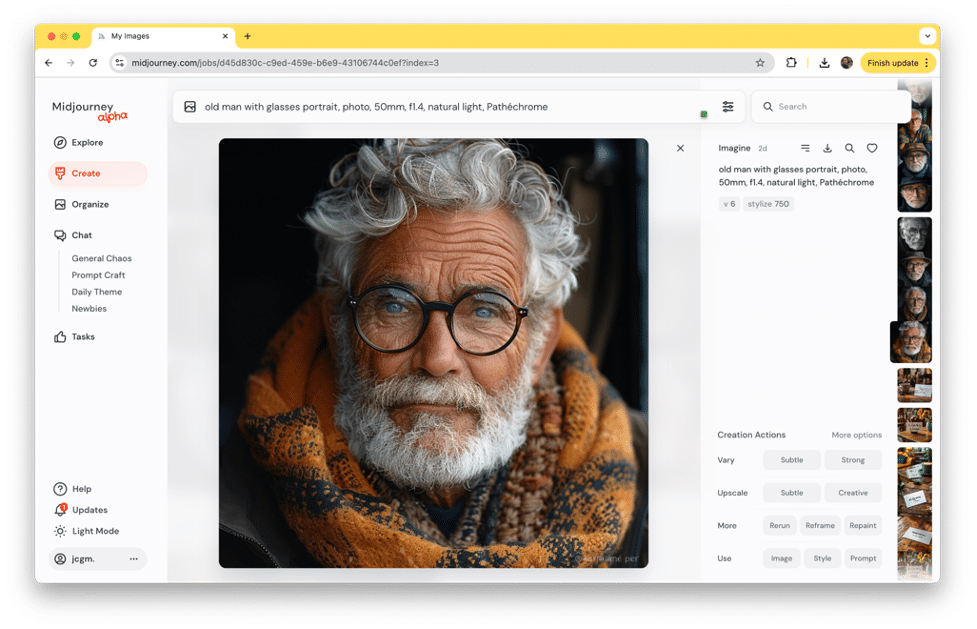
3. OpenAI Dall-E 3
Dall-E 3 was integrated into ChatGPT a few months ago by OpenAI, allowing users to generate images within the chat app. One standout feature of DALL-E 3 is its ability to generate photorealistic images. Simply describe the features of the character you want to see on the screen, and ChatGPT is clever enough to understand your intent and render an image in a matter of seconds.
Recently, OpenAI announced that users without a ChatGPT subscription can now generate up to two images per day.
Pros:
● High-quality Image Generation: Dall-E 3 can produce images that are photorealistic. Although not in par with Nectar AI or Midjourney, it’s still good enough.
● Intuitive Interface: The integration with ChatGPT allows for a seamless user experience, where users can interact with the AI in a conversational manner.
● Free Access for Basic Use: OpenAI recently announced that users without a ChatGPT subscription can generate up to two images per day, making it accessible for casual users.
Here’s an example of an image generated with a free account on ChatGPT:
Prompt: A photorealistic image of a female model wearing a tshirt with text “Dall-E is cool” on it.
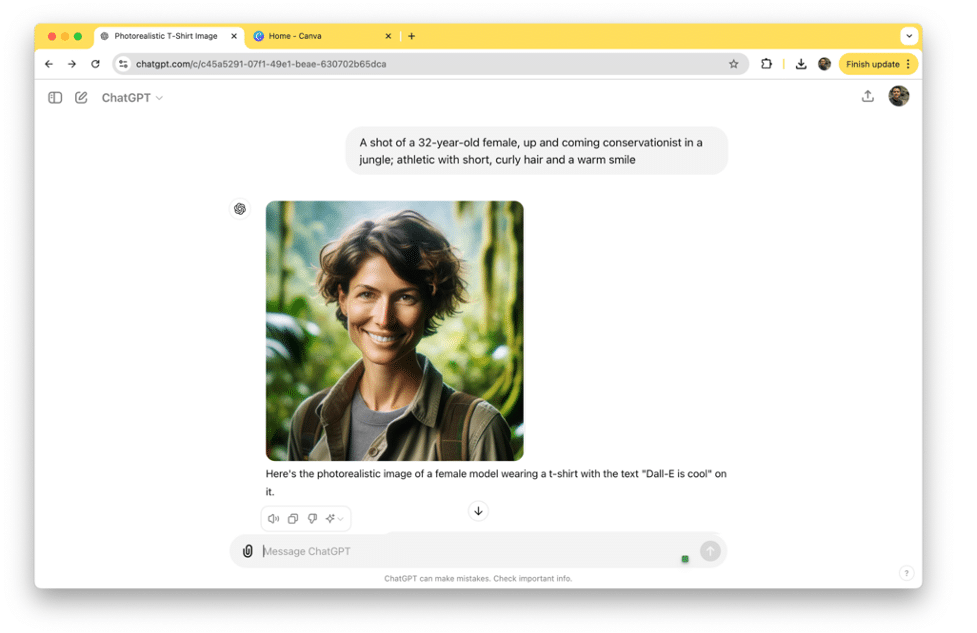
4. Freepik
Freepik is one of the biggest platforms for graphic assets and illustrations. It also offers AI tools and services that let you create photorealistic images. A few days ago, the company announced that they are integrating Flux.1, an open-weight image model from Blackforest Labs, the original team of engineers behind the technology of Stable Diffusion and latent diffusion.
Flux.1 is a significant addition to its set of image models because it generates high-quality and hyperrealistic images, sometimes even better than Midjourney or Dall-E 3.
Pros:
● High-Quality Outputs: The integration of Flux.1 enables Freepik to produce images that are often on par with or even exceed those generated by other platforms like Midjourney and Dall-E 3.
● Extensive Asset Library: Freepik offers a vast library of graphic assets, making it easy for users to find complementary images and illustrations.
● User-Friendly Interface: The platform is designed to be intuitive, allowing users to navigate and create images with ease.
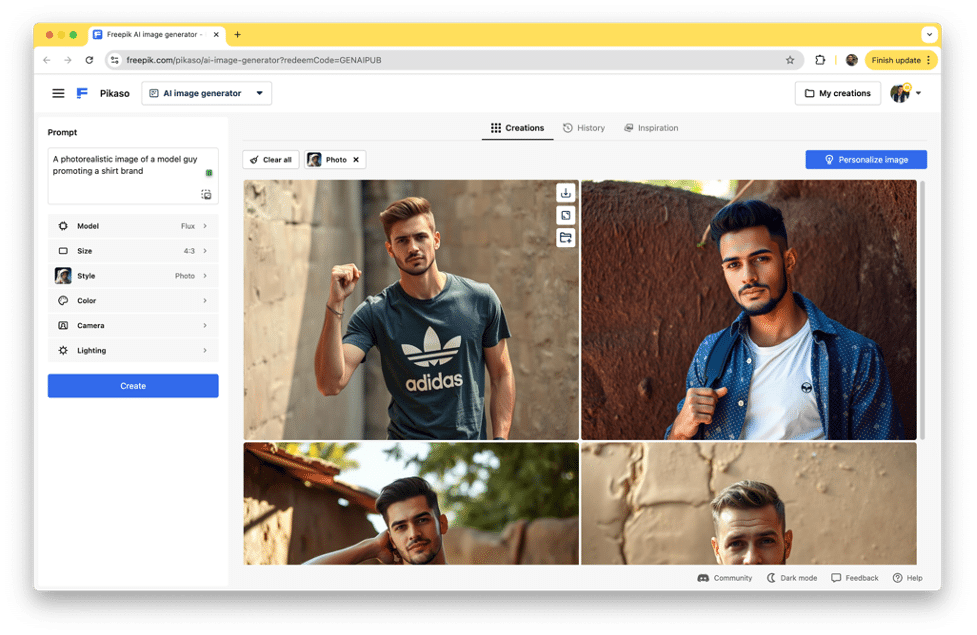
5. Leonardo AI
Leonardo AI is one of the original platforms in AI art. It’s been around for years and has created a large and vibrant community of AI artists around the world. One of the most beloved features of Leonardo AI is its wide array of image models available – from abstract art, concept art, and anime, to photorealism. The platform also supports different kinds of art styles.
Pros:
● Wide Array of Styles: Leonardo AI supports multiple art styles, allowing users to experiment with different aesthetics and techniques.
● Community Engagement: The platform has fostered a vibrant community of AI artists, encouraging collaboration and sharing of ideas.
● Rich and User-Friendly Tools: Leonardo AI provides intuitive tools that make it easy for users to create and modify images.
Check out this example image generation:
Prompt: Chinese modern beautiful woman, 20 years old, young and beautiful fashion, exquisite face, fair skin, stage, lighting, bright picture, singing with microphone in hand, slender figure, front full body photo, live photography, high definition, long view
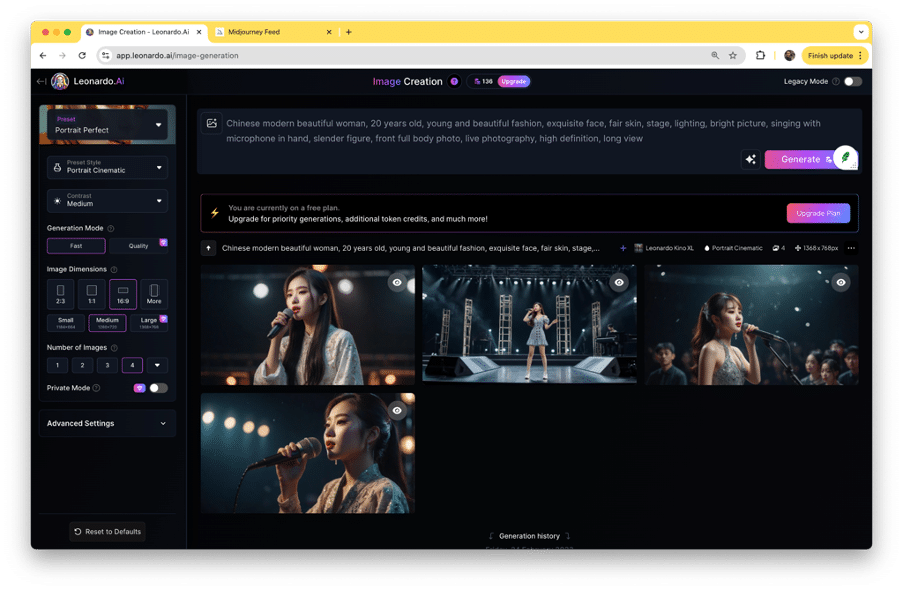
Here’s an expanded version of the last variation:
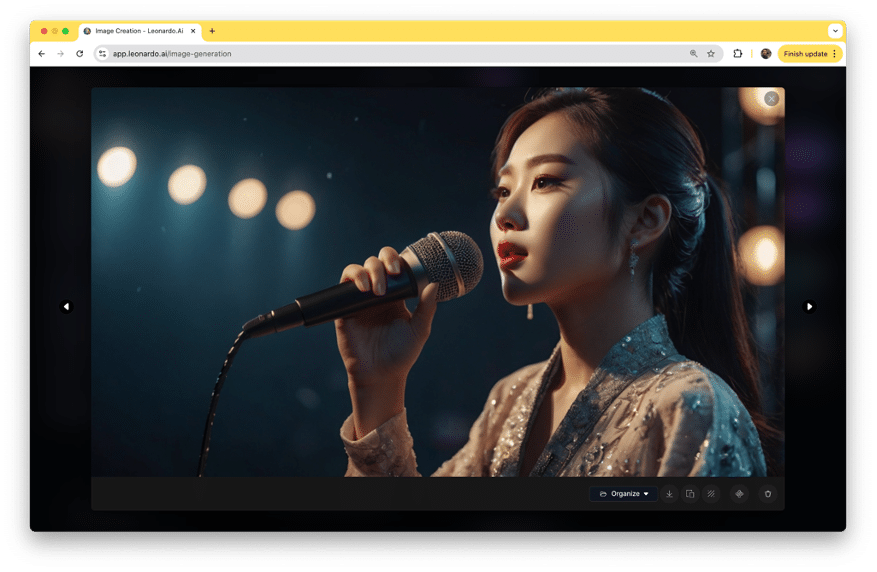
The AI tools discussed in this article each bring something unique to the table, catering to different needs and preferences. If you’re looking for highly customizable virtual companions, top-tier image quality, or a seamless user experience, these platforms have something to offer.
From generating lifelike portraits to exploring creative possibilities, these tools allow you to tailor your experience based on what matters most to you. The best way to find the right fit is to experiment with each one and discover which aligns best with your vision and requirements.

